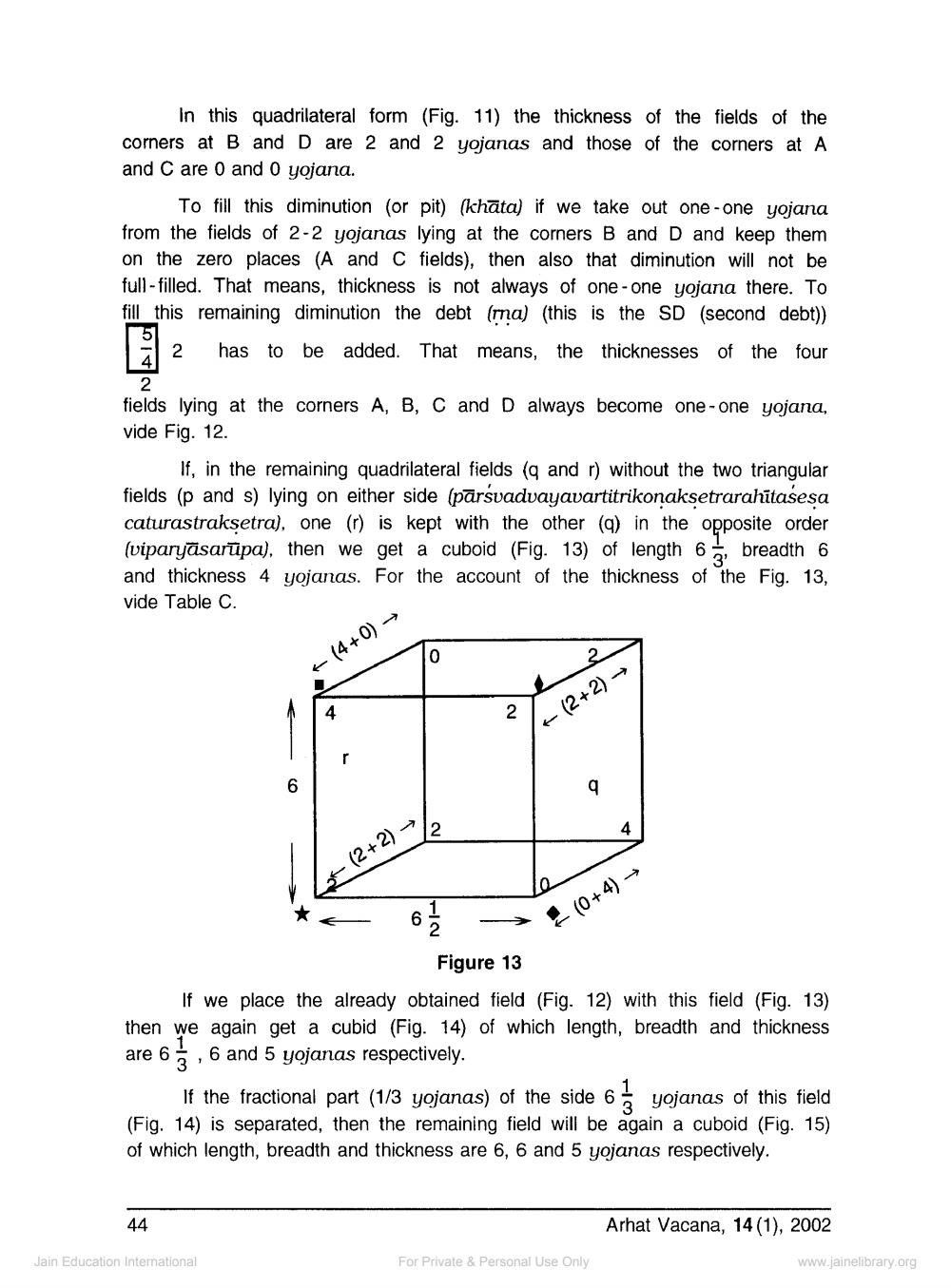________________
In this quadrilateral form (Fig. 11) the thickness of the fields of the corners at B and D are 2 and 2 yojanas and those of the corners at A and C are 0 and 0 yojana.
To fill this diminution (or pit) (khāta) if we take out one-one yojana from the fields of 2-2 yojanas lying at the corners B and D and keep them on the zero places (A and C fields), then also that diminution will not be full-filled. That means, thickness is not always of one-one yojana there. To fill this remaining diminution the debt (
ma) (this is the SD (second debt)) 2 has to be added. That means, the thicknesses of the four
fields lying at the corners A, B, C and D always become one-one yojana, vide Fig. 12.
If, in the remaining quadrilateral fields (g and r) without the two triangular fields (p and s) lying on either side (pārsvadvayavartitrikonaksetrarahītasesa caturastraksetra), one (n) is kept with the other (a) in the opposite order (viparyāsarūpa), then we get a cuboid (Fig. 13) of length 65, breadth 6 and thickness 4 yojanas. For the account of the thickness of the Fig. 13, vide Table C.
+(4+0) ►
(2+2) ►
+
1
22
(2+2) ►
(0+4) ►
Figure 13
If we place the already obtained field (Fig. 12) with this field (Fig. 13) then we again get a cubid (Fig. 14) of which length, breadth and thickness are 6 , 6 and 5 yojanas respectively.
If the fractional part (1/3 yojanas) of the side 65 yojanas of this field (Fig. 14) is separated, then the remaining field will be again a cuboid (Fig. 15) of which length, breadth and thickness are 6, 6 and 5 yojanas respectively.
44
Arhat Vacana, 14(1), 2002
Jain Education International
For Private & Personal Use Only
www.jainelibrary.org




